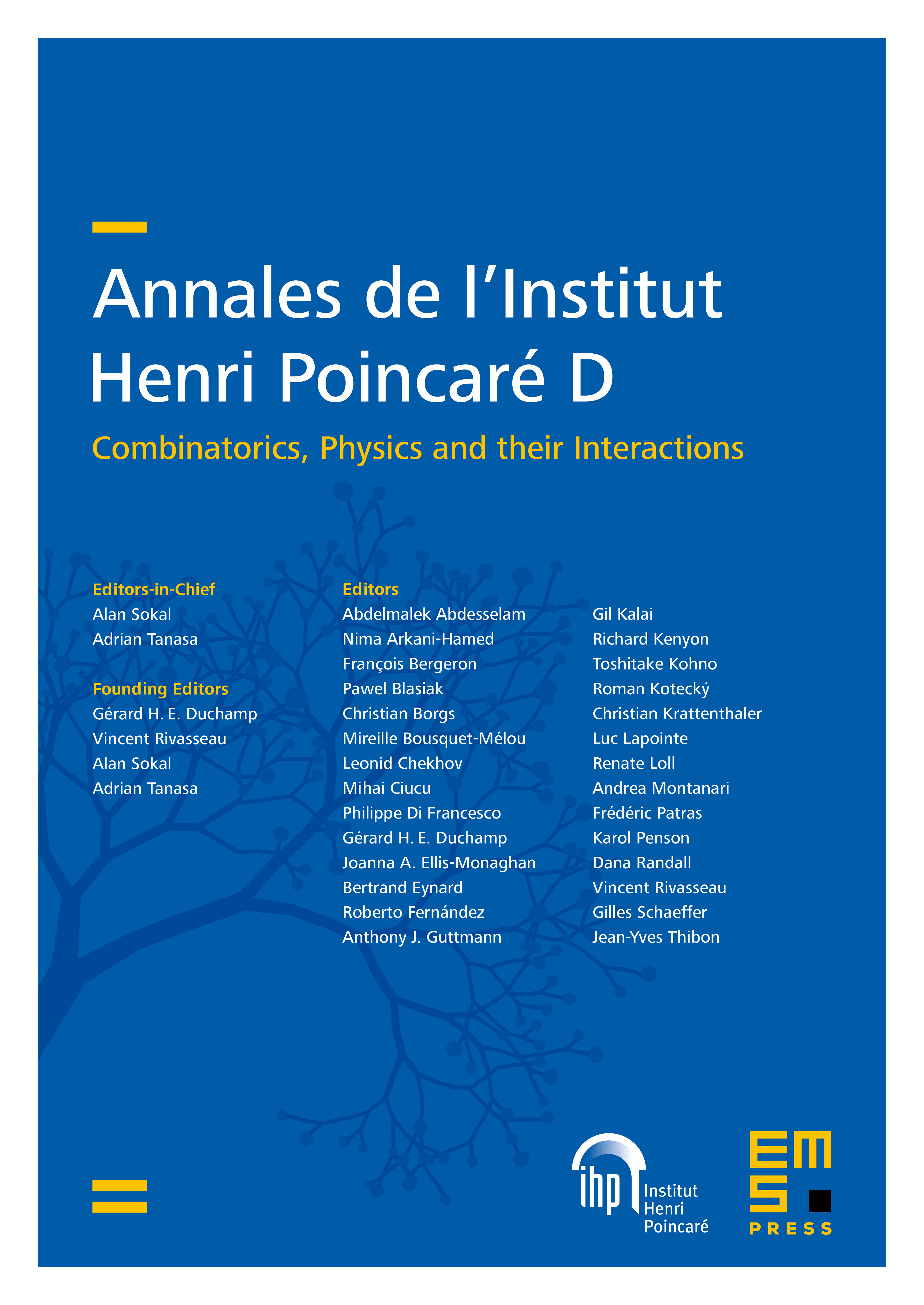Lattice walks confined to an octant in dimension 3: (non-)rationality of the second critical exponent
Luc Hillairet
Université de Tours et Université d’Orléans, Tours, FranceHelen Jenne
Université de Tours et Université d’Orléans, Tours, FranceKilian Raschel
Université d’Angers, Angers, France

Abstract
In the field of enumeration of walks in cones, it is known how to compute asymptotically the number of excursions (finite paths in the cone with fixed length, starting and ending points, using jumps from a given step set). As it turns out, the associated critical exponent is related to the eigenvalues of a certain Dirichlet problem on a spherical domain. An important underlying question is to decide whether this asymptotic exponent is a (non-)rational number, as this has important consequences on the algebraic nature of the associated generating function. In this paper, we ask whether such an excursion sequence might admit an asymptotic expansion with a first rational exponent and a second non-rational exponent. While the current state of the art does not give any access to such many-term expansions, we look at the associated continuous problem, involving Brownian motion in cones. Our main result is to prove that in dimension three there exists a cone such that the heat kernel (the continuous analog of the excursion sequence) has the desired rational/non-rational asymptotic property. Our techniques come from spectral theory and perturbation theory. More specifically, our main tool is a new Hadamard formula, which has an independent interest and allows us to compute the derivative of eigenvalues of spherical triangles along infinitesimal variations of the angles.
Cite this article
Luc Hillairet, Helen Jenne, Kilian Raschel, Lattice walks confined to an octant in dimension 3: (non-)rationality of the second critical exponent. Ann. Inst. Henri Poincaré Comb. Phys. Interact. 11 (2024), no. 4, pp. 683–713
DOI 10.4171/AIHPD/184